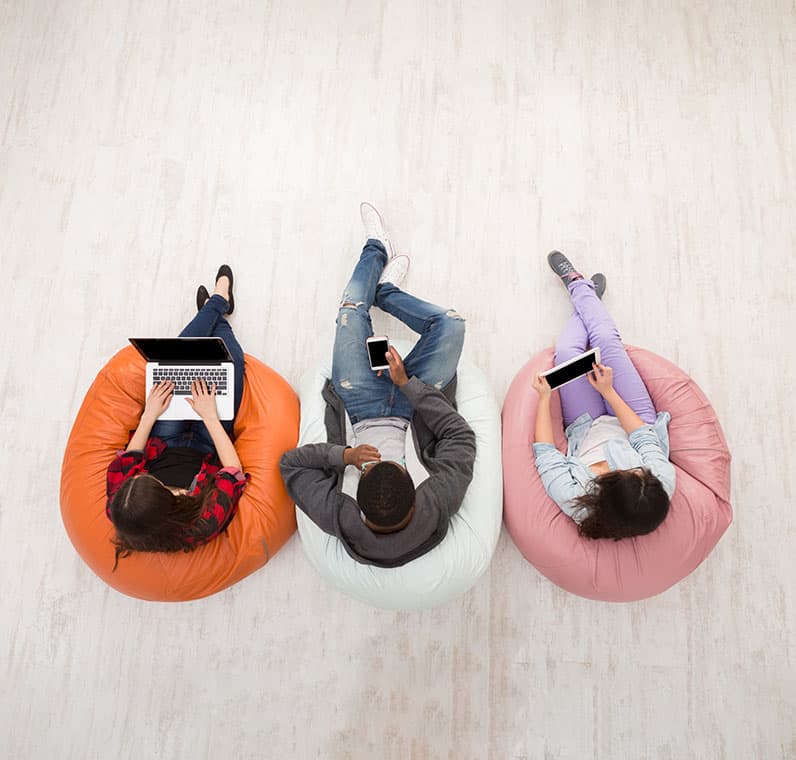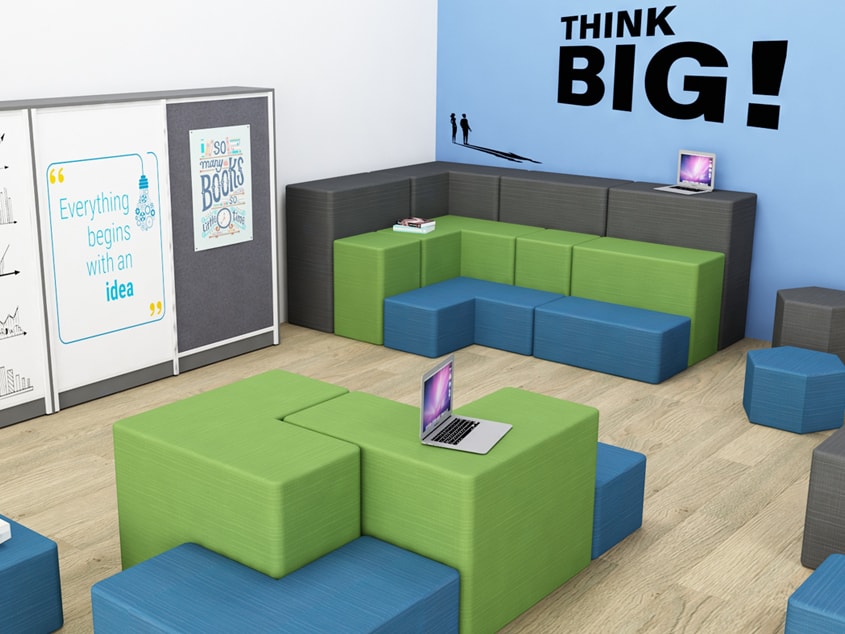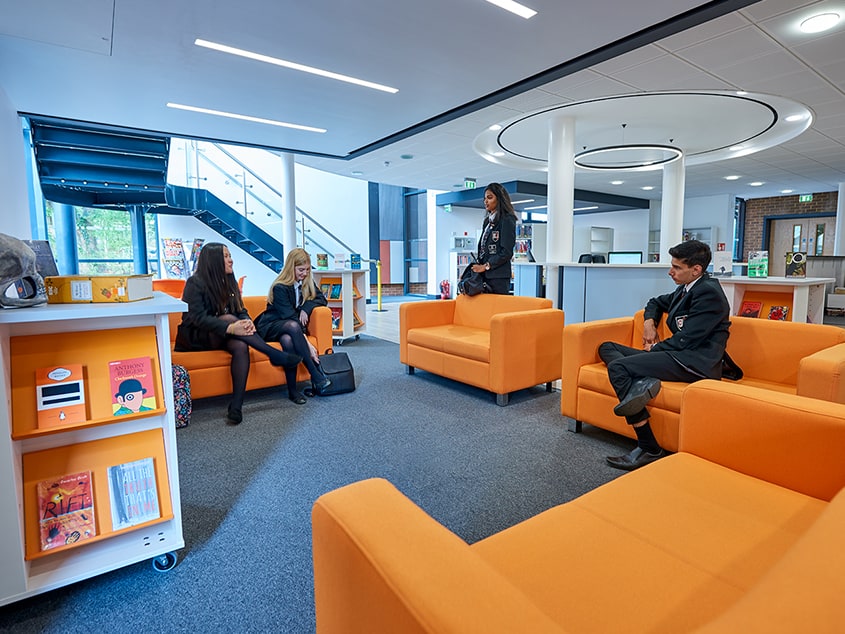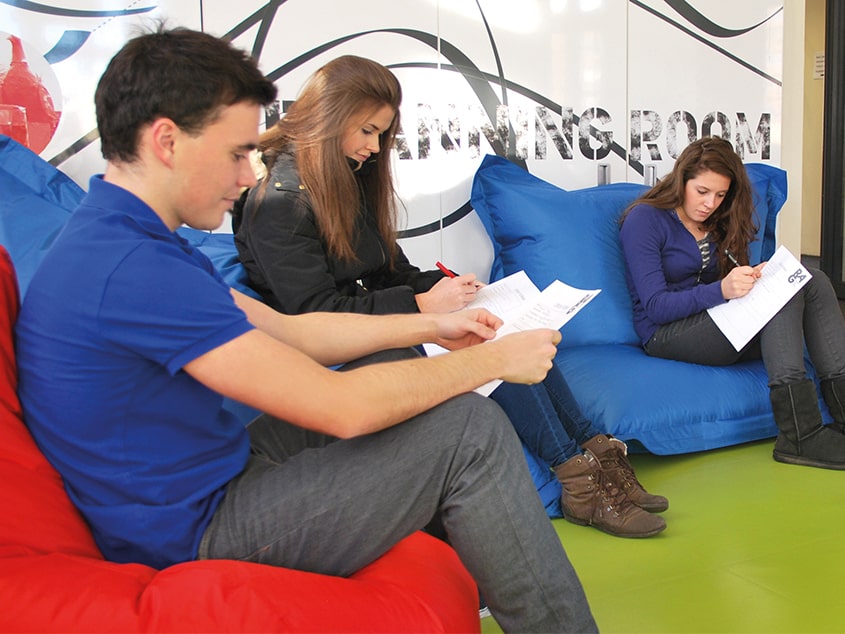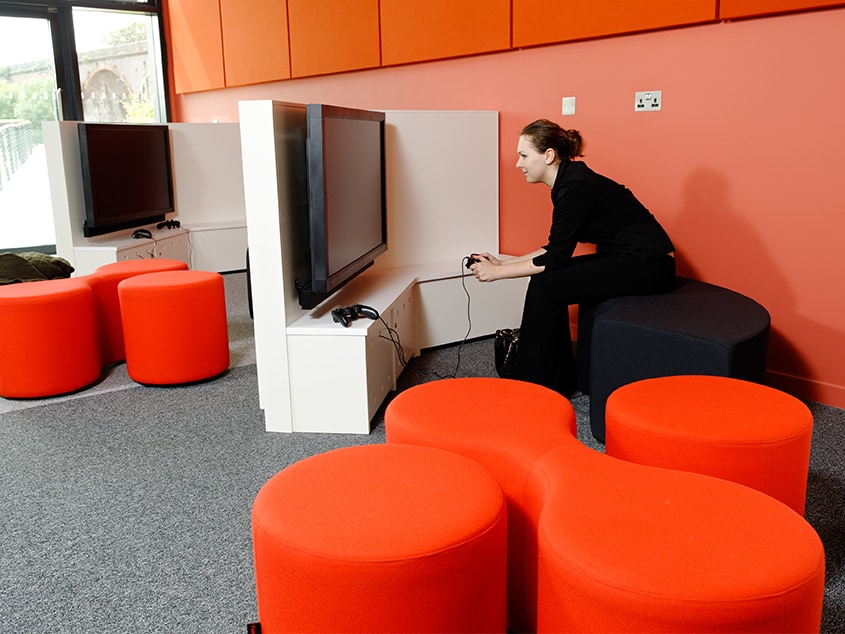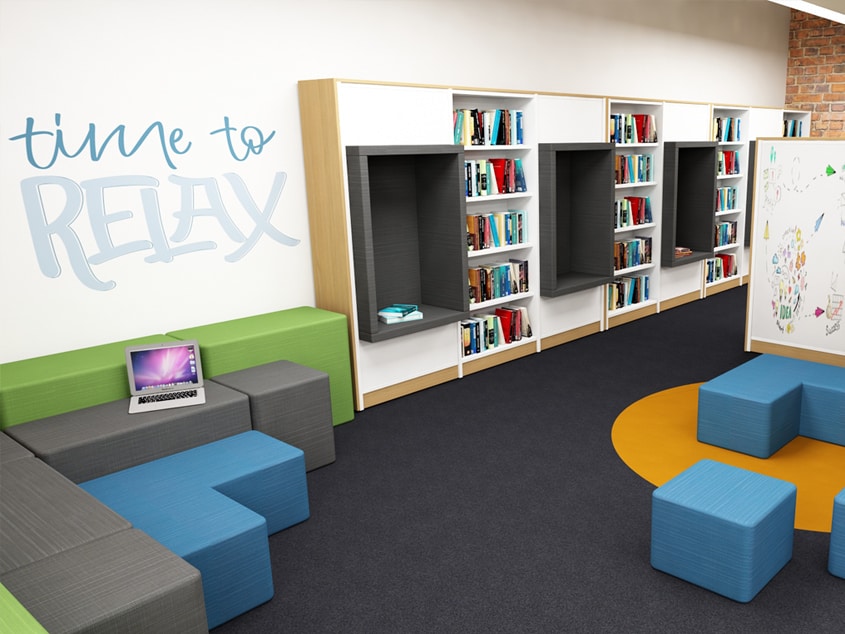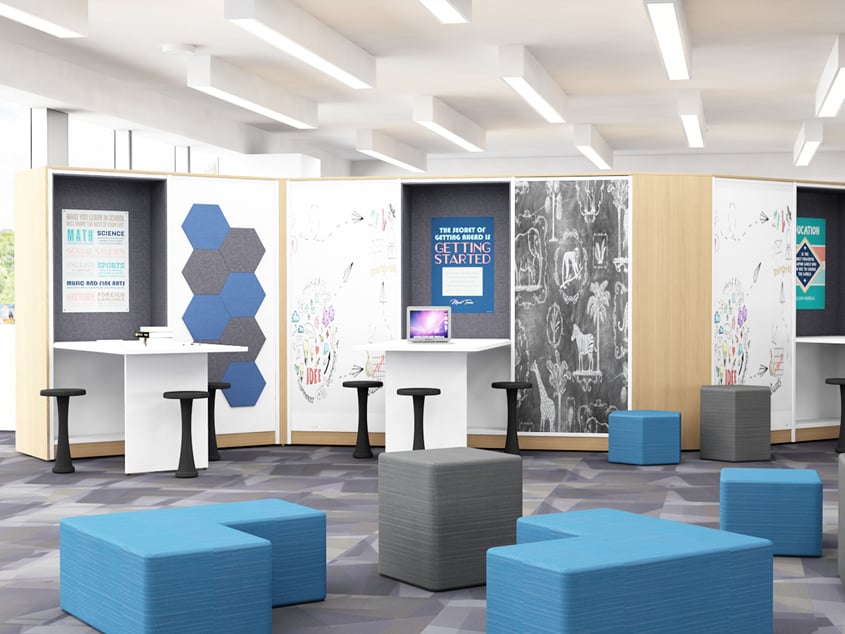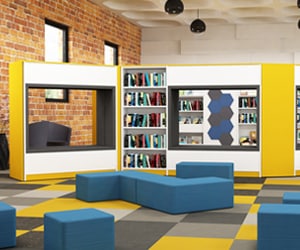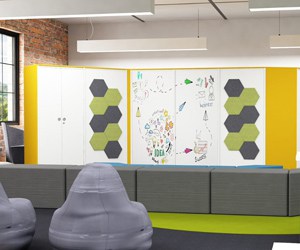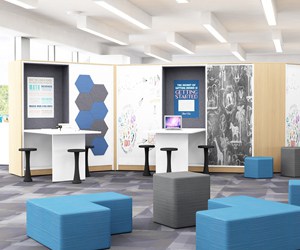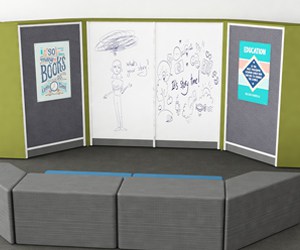A Third space can be defined as the intersection where new knowledge and discourses emerge from the blending and merger of understanding and experiences from a students’ home, community, and peer network with the more formalised learning they will encounter during their education.
When space is at a premium, finding appropriate places for students to meet or gather outside of the classroom is invaluable.
The purpose of creating breakout spaces is to create dedicated areas that significantly differ in look and feel from the more formal classroom environment. There are multiple ways of achieving this but consideration should be paid to colour, floor finishes, texture, lighting, and furniture. Carefully selecting these elements creates a unique, flexible, creative, alternative learning environment. Breakout spaces should be created throughout the campus, utilising spaces such as corridors, stairwells, library areas, dining halls, and outdoor spaces.
Benefits of a breakout zone:
- Encourages clear and innovative thinking
- Promotes wellbeing
- Supports the benefits of social interaction
- Grows a sense of community



